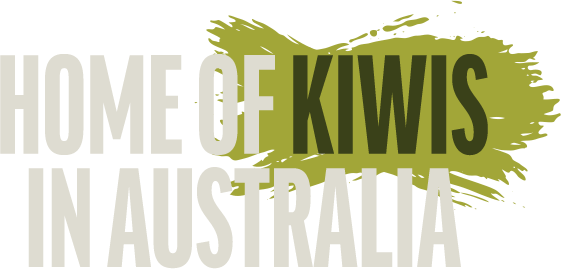
If you hold a 444 visa and you’re in a relationship with an Australian citizen or an Australian permanent resident, you may be eligible for an onshore partner visa.
You may be wondering why you’d want to apply for a partner visa when you already have work rights as a 444 holder. The benefit of this visa route is that it leads to permanent residency (PR). PR is a pathway to citizenship. Benefits of PR and citizenship include access to more job opportunities, reduced education costs and access to government grants and more support.
This partner visa (820/801) is a two-part application although you pay one visa application charge when you lodge the initial application.
Onshore partner visa eligibility
To be eligible for the 820/801 visa, you would either need to:
- have evidence of living together for the 12 months immediately prior to lodging the partner visa
- be married before you lodge the partner visa
- register your relationship in a state or territory of Australia that allows registration. Registration waives the 12-month cohabitation requirement.
Relationship Registration
The registration process is different in each state or territory, but common requirements are:
- you must both be aged 18 or over
- neither of you can be married to someone else (even if separated for a long time)
- you two must not be related by family
You do not need to hold relationship registration at the time of lodging the partner visa, but you must hold it prior to a decision being made on the visa application. You can choose to register your relationship in one state and then move to another state. Relationship registration is briefly explained here.
NSW relationship registration
To register in New South Wales, you’ll need to show that one of you is living in NSW. You’ll need to show specific forms of identification and proof of residence.
QLD relationship registration
Queensland registration requires you to demonstrate that at least one of you has lived in Queensland and you must be able to prove your ID and show evidence of living in QLD.
Victoria relationship registration
To register your relationship in Victoria, you’ll need to show that one of you has lived in Victoria for a short period with proof of residency, such as utility account or superannuation statements.
ACT relationship registration
Relationship registration in the Australian Capital Territory requires one of you to show two pieces of evidence of residence in the ACT.
South Australia relationship registration
To register in South Australia, you’ll need to show that one of you has been usually resident in South Australia.
Tasmania relationship registration
Tasmanian couples need to show that both people are living in Tasmania.
Western Australia and the Northern Territory
Unfortunately, relationship registration is not available for migration purposes in Western Australia or the Northern Territory.
Living together and showing partnership evidence
You must be living together when your partner visa is lodged (even if you are relying on the relationship registration to waive the 12 months) and continue to live together during the processing time. You need to show evidence of your shared life together, such as financial commitments, shared living arrangements and social recognition of your relationship. Not only do you need to gather evidence before lodging an application, you need to continue submitting evidence as your application progresses to show that your relationship is genuine and ongoing. We provide detailed instructions and lists of possible evidence you can show.
Lodging the PR component of your partner visa
Once granted the temporary partner visa (subclass 820), you will no longer hold a 444 visa. Your 820 visa remains in place until the PR part of your visa (subclass 801) is granted. You can only lodge the 801 part of your visa two years after lodging the initial application. At this time, you must provide Immigration with further evidence of your ongoing relationship in order to obtain the PR partner visa (801).
Pathway to citizenship
Once you are an Australian permanent resident, you can stay in the country indefinitely or apply for citizenship once you are eligible.
Children included in the 820/801 visa
Your dependent children can be included in an 820/801 partner visa application. You will need to have sole custody or legal permission from the child/ren’s other biological parent for them to be included in your 820/801 application.
Australian partner sponsor approval – pending
The Migration Amendment (Family Violence and Other Measures) Bill has been drafted and is pending approval. Once legislated, it will require your Australian partner to be approved as a sponsor before your 820/801 visa application can be lodged. As this will be a new step in all 820/801 applications, the processing time and cost of this sponsorship is not confirmed. As of yet (September 2020), we do not know when this new framework will be applied to partner visa applications.
Permanent residency straight away
Some couples can bypass the temporary visa (820) stage. If you have been living with your Australian partner for the three years immediately prior to lodging your application – or you have a child together and have lived together for the previous two years – you can apply for the 801 partner visa straight away.
Another option
If you arrived in Australia between Feb 2001 – Feb 2016, you have lived here for the past five years and have earned at least $53,900 for each of the past four financial years, you may be eligible for PR in your own right through the Skilled Independent visa (NZ Stream).
Split payment options available and may vary depending on the type of visa being applied for.
Disclaimer: The information displayed on these pages is intended to provide a general overview of some Australian visa types. It is not a substitute for tailored, professional advice relating to your own personal circumstances. There are dozens of Australian visa subclasses; we refer to only a narrow selection here. Migration policies and regulations change frequently. We are not responsible for any errors or omissions relating to the generic information supplied here. You should always seek up-to-date advice from a Registered Migration Agent or refer to the Department of Home Affairs website prior to lodging an application. For more information visit www.truebluemigration.com





